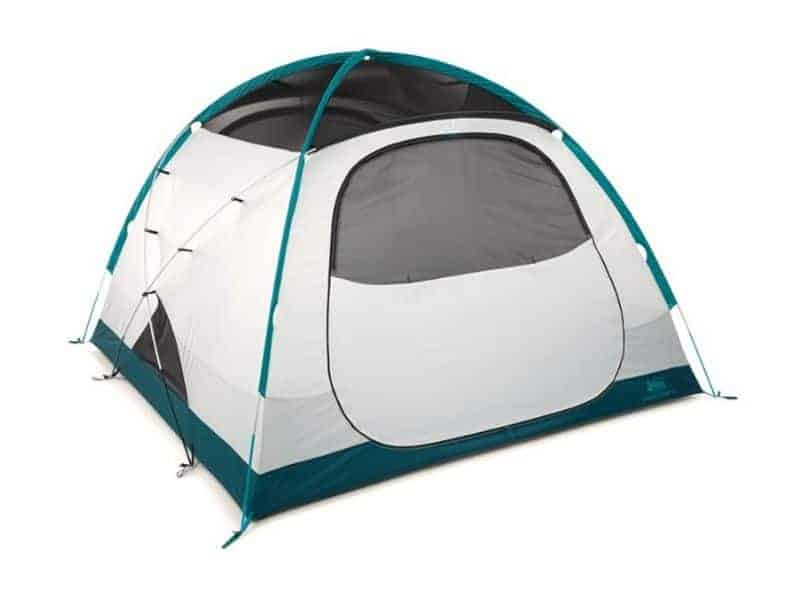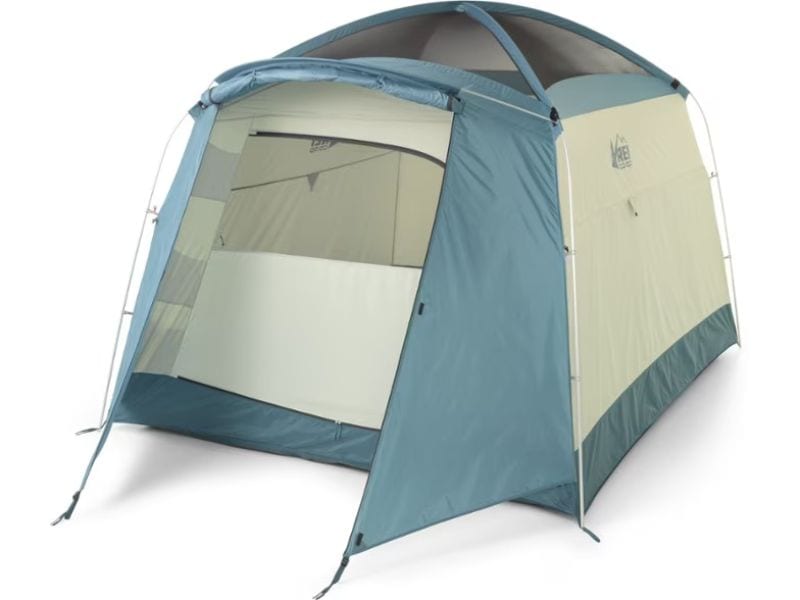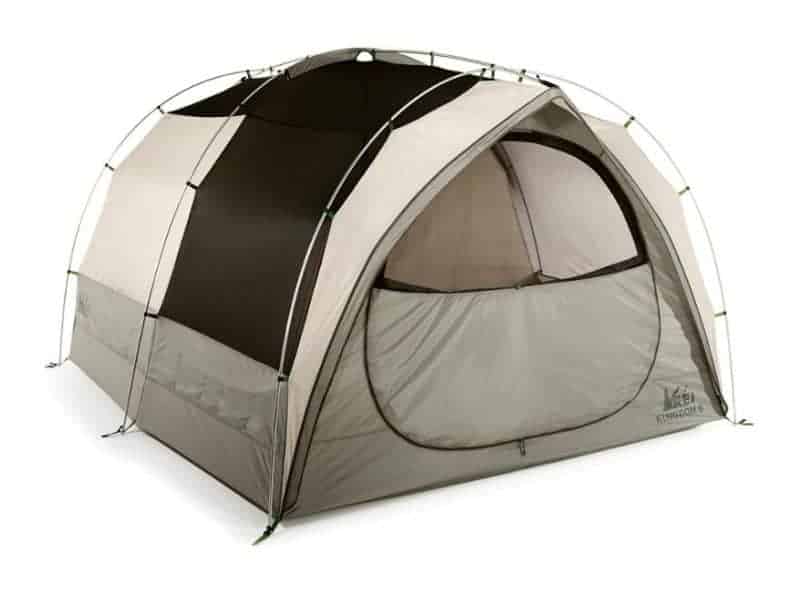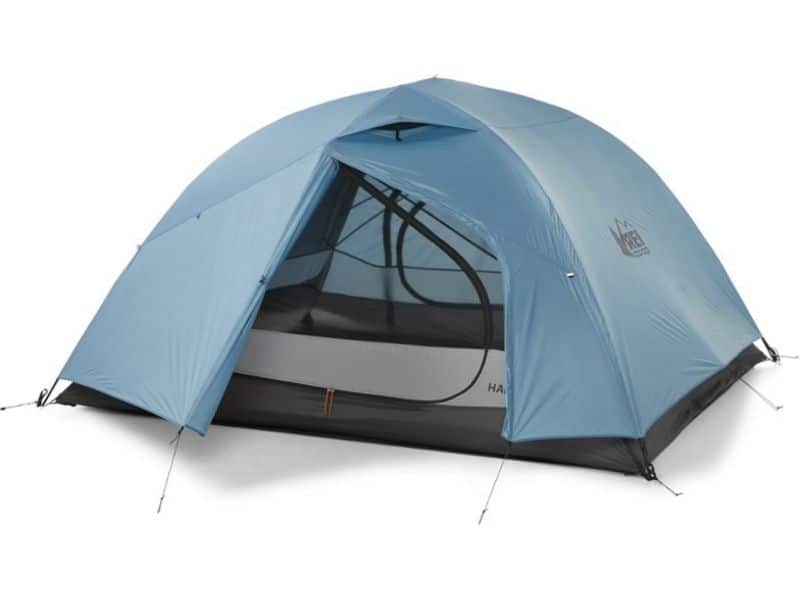In a bid to find the best tent on the market this year, our team has been busy putting together a selection of kickass tents. We put many to the test from the likes of REI, The North Face, MSR, Coleman, Marmot, and other big-name brands.
We know what a hassle it can be wading through the wealth of worthy options out there, so to help you out, we’ve separated the proverbial wheat from the chaff and drawn up a list of our top 9 picks.
All of the camping shelters that made our final list are ones in which we’d be happy to spend a night or ten in 2- or 3-season conditions. But because we’re aware different campers have different budgets and requirements, we made sure our list has plenty of variety.
We’ll also discuss why we picked the REI Co-op Base Camp as the best overall camping tent, and how to decide which tent meets your needs.
Do
Don’t
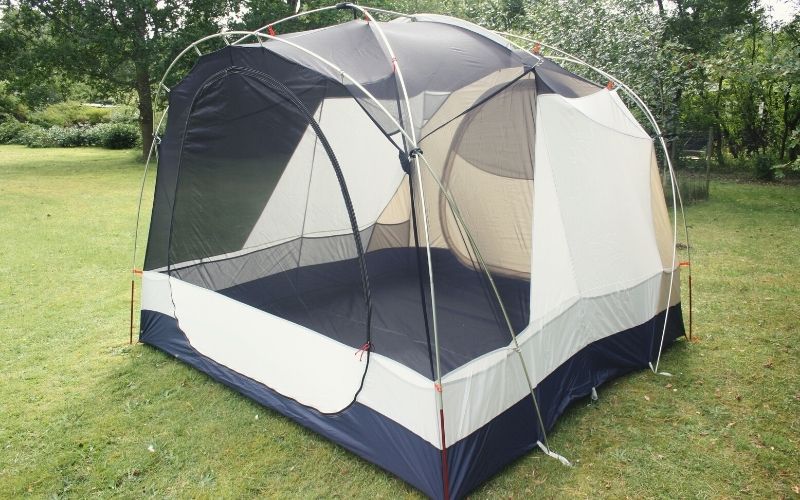
Table of Contents
- Best Camping Tent: Quick Recommendations
- Which is the best camping tent?
- Camping Tent Comparison Table
- Top Models by Category
- How to choose between the best car camping tents?
- Capacity & Floor Space
- Weather Resistance
- Weight And Packed Size
- Camping Gear Storage Space: Pockets, Vestibules, And Garages
- Durability
- Ease Of Setup
- Ventilation
- Peak Height And Pole Structure
- What is the best 4-person tent?
- What is the best 6-person tent?
- What is the best 8-person tent?
- What is the best waterproof tent?
- Best Tents for Camping: The Verdict
Best Camping Tent: Quick Recommendations
-
Editor’s Choice:
REI Base Camp 6
“A well-thought-out and amazingly user-friendly camping tent that makes great use of every inch of usable space.” -
Best Value:
REI Co-Op Skyward 6
“This cabin-style shelter ticks all the essential boxes – and at a fair price point.” -
Best Budget:
Coleman Sundome 4
“Although a little short on weatherproofing, the Sundome’s a great entry-level tent and ideal for newcomers making their first forays into the wilds.” -
Best Tunnel:
REI Wonderland 6
“A roomy family camping-cum-luxury tent with a central divider to give you two private rooms.” -
Best Cabin:
Coleman Octagon 98
“It may be heavy, but the Octagon’s 122-square-foot floor area and 82-inch center height make it a great car-camping tent if you prefer a little extra elbow room.” -
Best Extended Tent:
The North Face Wawona 6
“A roomy, well-made shelter with a front vestibule big enough to park a small car in (or store tons of outdoor gear and/or use as a sheltered seating area).” -
Best for Budget Backpackers:
REI Co-op Half Dome SL 3+
“Weighing in at just 5 lbs. 11 oz. but offering 16.25 sq. ft. of space per sleeper, it’s easy to understand why the Half Dome is one of the most popular budget backpacking tents on the market.” -
Best 8-Person Tent:
Eureka Copper Canyon
“An extra-spacious shelter that’s easy to pitch and excels in warm weather conditions.” -
Recommended:
MSR Habitude
“An outstandingly well-made shelter with a lofty peak height, enough room for 4 adult sleepers, ample storage space, and first-rate weatherproofing.”
Which is the best camping tent?
Having spent many a night under the stars, our team has hand picked the following shortlist to help you find the perfect camping tent for your needs. We tested these tents in a variety of climates to get a feel for performance, including Joshua Tree National Park, Acadia National Park, and the Scottish Highlands.
- REI Co-Op Base Camp 6
- REI Co-Op Skyward 6
- Coleman Sundome 4
- REI Kingdom 6
- Coleman Octagon 98
- The North Face Wawona 6
- REI Co-op Half Dome SL 3+
- Eureka Copper Canyon
REI Base Camp 6
Editor’s ChoiceThe REI Base Camp 6 wins our award of Best Car-Camping Tent because it ticks all the boxes that need ticking for three-season family camping. It’s roomy, easy to pitch, durable, offers outstanding weather protection, and has a wealth of interior and exterior storage options that help boost livability.
The Base Camp’s geodesic, 5-pole, dome-style design means it lacks a little headroom compared to tunnel or cabin tents. Nevertheless, we found it plenty livable for 5 or 6 adult sleepers. This design, our testers found, also makes it a much better option in blustery weather than cabin tents like the REI Skyward 6 or tunnels tents like the Kingdom 6.
Features-wise, the Base Camp is a dream. There are two large air vents in the roof, 14(!) pockets for gear storage, hang loops galore, two oversized vestibules, and two extra-wide doors that give all sleepers easy access to both entrances.
The Base Camp is also one of the most well-made shelters we’ve ever slept in. Its 75D rainfly and body fabric are among the burliest we tested, while the 150D floor is tough enough to let you leave the included footprint at home to shed a few ounces. The thick aluminum poles are also a little more confidence-inspiring than those in similarly priced tents.
The Base Camp is a little pricier than REI’s Skyward 6, but has an extra 10 square feet of vestibule space and is a better performer in wet and windy conditions. And while not as roomy as the REI Kingdom 6, it’s a fraction cheaper and offers better stability in wild weather.
We’re also big fans of the 4-person version of this tent, the Base Camp 4. However, added livability is never a bad thing, and the Base Camp 6’s extra 14” of peak height and 24 feet of interior space seem well worth the 4-pound weight penalty.
Specs
- Type: Dome
- Floor Area: 84 square feet
- Center Height: 74”
- Weight: 20 lbs. 10 oz.
PROs
- Roomy
- Good weather resistance
- Nice peak height
- 2 roof vents and 1 wall vent
- 2 large vestibules
CONs
- Pricey
- Ventilation not as impressive as REI Grand Hut
Bottom-Line: A tough, roomy, well-made camping tent that provides plenty of weather protection for 3-season adventures and better organizational features than its similarly priced peers.
REI Co-Op Skyward
Best ValueThe REI Skyward is one of the best six-person tents available for camping families who want plenty of space, solid waterproofing, and user-friendly features at a fair price point.
This cabin-style shelter is remarkably well made, using similar 75D and 150D fabrics in the rainfly, body, and flooring. Its bounteous storage options, nearly vertical walls, 78” peak height, and 83.3 sq. ft. of interior space also make it among the most livable we tested, while the pre-bent tent poles and hubbed pole system make it a cinch to put up and take down.
The 1,500mm HH rainfly, extensive mesh canopy, and double-doored design make the Skyward a versatile tent, providing both ample rain protection for three-season conditions and enough ventilation to stave off condensation and stuffiness in hot and humid weather.
Compared to the REI Base Camp, the Syward is a poorer performer in inclement weather, mainly due to its X-shaped pole system and vertical walls, both of which make it more vulnerable to collapse, billowing, and/or buckling in strong winds. It also has fewer storage options than the REI Kingdom 6 and a little less end-to-end headroom.
Specs
- Floor Area: 83 sq. ft.
- Center Height: 78”
- Weight: 16 lbs.
PROs
- 78” peak height
- Relatively lightweight
- Great ventilation
- Easy setup
- Tough fly, body, and floor fabric
CONs
- Poorer performance in high winds
- Less waterproof than REI Base Camp
Bottom-Line: A more affordable 6-person camping tent that scores highly in every important metric.
Coleman Sundome 4
Best BudgetThe Coleman Sundome 4 wins our Best Budget Camping Tent award once again owing to its impressive performance in almost every metric and friendly pricing. This 4-person tent is a great option for campers who tend to do most of their camping in fair weather and spend only 5-10 nights “under the canvas” per year.
The Sundome has a generous 63 sq. ft. of floor space and a peak height of 59 inches – none too shabby for a dome-style tent designed for 4 sleepers. Given that it weighs just 7.4 lbs., its weight-to-space ratio is up there with the best we tested.
Our testers all like that this tent is cinch to pitch and commented that is stands up well to breezy and blustery conditions thanks to its curved walls.
Like all budget camping tents, the Sundome makes a few compromises that make it less than ideal for multi-day trips or wet-weather adventuring.
For starters, the lack of any form of vestibule largely negates the benefit of the roomy interior by forcing you to store gear inside if you want to keep it dry. And while the partial coverage rainfly has a high hydrostatic head rating (3,000mm), its limited coverage means the lower portion of the tent is left exposed to any rain.
This is also the only model on our list that uses fiberglass poles. We found these to be sturdier than other fiberglass poles we’ve come across, but still harbor a few concerns about how they’d hold up in stormy conditions and over time.
All of this means the Sundome is a solid budget tent for summer camping. If you’re looking for a 4-person shelter for 3-season camping trips, however, we recommend you fork out a little more for the REI Base Camp 4 or MSR Habitude.
Specs
- Type: Dome
- Floor Area: 63 sq. ft.
- Center Height: 59”
- Weight: 7.4 lbs.
PROs
- Affordable
- Roomy interior
- Lightweight
- Decent center height
CONs
- Less durable materials than pricier options
- No vestibules
- Partial-coverage rainfly
Bottom-Line: A lightweight and affordable tent that makes a few compromises but is nevertheless a solid option for less frequent, fair-weather camping.
REI Wonderland 6
Best TunnelThe REI Wonderland is one of the best family tents on the market owing to its roomy, tunnel-shaped design, central divider, and unique features.
The Wonderland is the new, updated, and improved version of REI’s hugely popular Kingdom tent. Like its predecessor, the Wonderland has near-vertical walls that maximize headroom from end to end and side to side. It also has a color-coded fly, poles, and footprint, which made setup breezy in testing.
So what’s new? Our testers loved the all-new, innovative “scalloped” fly. This feature boosts airflow and lts you enjoy 360° views, even with the fly on.
Like most REI shelters, this tent boasts great features. You get a ton of interior pockets for gear storage, vents at top and bottom to prevent stuffiness and condensation, hanging hooks for a lantern or headlamp, and two extra-large doors.
A center partition wall also zips into place to give you two separate rooms, making it a great choice of shelter for families or groups who like a little extra privacy.
With 83.3 square feet of floor space and a 78” center height, the Wonderland is a roomy 6-person tent. However, it has no vestibule area, only a duo of small awnings that provide a sliver of cover over the doorways.
Specs
- Type: Tunnel
- Floor Area: 83.3 square feet
- Center Height: 78”
- Weight: 22 lbs. 15 oz.
PROs
- Spacious interior
- Room divider
- Easy to set up
- Plenty of pockets
- Durable materials (75D fly, 150D floor)
CONs
- Heavy
- No vestibule
- Partial-coverage rainfly
Bottom-Line: A well-made and innovative three-season tent that’s perfect for car-camping families – as long as you don’t need too much storage space.
Coleman Octagon 98
Best CabinThe Coleman Octagon 98 is the perfect cabin tent for families and large groups thanks to its outstanding livability.
This beast of a shelter has a peak height of 82” and a whopping 122 sq. ft. of interior space. That’s big enough to accommodate all the family, a few friends, a canine or two, and still have plenty of room left for camping gear. Assuming you have 8 sleepers, it equates to 15.25 sq. ft. per sleeper. (The tent’s octagonal shape, however, makes it tricky to squeeze in 8 adult-sized sleeping pads.)
Beyond its oversized dimensions and sturdy build, what we love about the Octagon are its family-friendly features. These include the huge, D-shaped front door (handy for keeping an eye on the kids while lounging inside), the removable room dividers that let you enjoy a little privacy come bedtime, and the nicely sized interior pockets.
The only complaints we have with the Octagon are its weight (45 lbs.) and lack of vestibules. While the former is forgivable given the size of the thing and the robustness of the build, the inability to store wet gear, cooking equipment, and other kit outside the main sleeping area may prove to be a dealbreaker for some.
Specs
- Type: Cabin
- Floor Area: 122 sq.ft
- Center Height: 82”
- Weight: 45 lbs.
PROs
- Enough room for two queen-size airbeds or 8 campers in sleeping bags
- Tough (steel poles, 1000D floor, 68D fly and body)
- Peak height
- An inexpensive tent for the size
- Room divider with multiple configurations
- 3,000mm HH flooring and rainfly
CONs
- Heavy
- No vestibules
Bottom-Line: Although the Octagon may not shine in every category, its enormous interior makes it a great option for larger families.
The North Face Wawona 6
Best Extended TentOur testers unanimously voted the North Face Wawona the best camping tent for storage owing to its enormous gear garage and awesome organizational features.
With a mighty 86.11 sq. ft. of interior space, 56 sq. ft. of vestibule space, a peak height of 80”, and a shedload of storage pockets in the roof and walls, the NF Wawona 6 is among the most livable and home-like tents out there.
Despite having a dome-style design, the Wawona’s steeper walls mean its peak height remains high throughout the tent, which allows you to wander around inside without having to duck. The massive, 44.7-square-foot front vestibule, meanwhile, means there’s a whole other area to hang out in if things in the sleeping area start to feel a little claustrophobic.
The Wawona’s partial-coverage rain fly means it doesn’t offer as much weather resistance as the Base Camp or Marmot Halo. However, the exposed portion of the tent body is waterproof enough to keep the interior dry in all but the heaviest of downpours so we’d happily take it out in all but the gnarliest of wet conditions.
Our testers all agreed that the Wawona excels in warm weather. It only has one door, but this is big enough to provide ample airflow throughout the interior. There’s also a duo of large ceiling vents and plenty of mesh in the roof, so stuffiness and condensation are kept to a minimum even when humidity is soaring.
Specs
- Type: Extended dome
- Floor Area: 56 sq. ft.
- Center Height: 80 inches
- Weight: 20 lbs. 15 oz.
PROs
- Massive vestibule
- Plenty of storage pockets
- Impressive peak height
- Great ventilation
CONs
- Partial-coverage rain fly
- Only 1 door (albeit a big one!)
Bottom-Line: The Wawona’s 56 square feet of space in the vestibule area make it a great option if you’re camping with lots of gear or simply want plenty of sheltered square footage for lounging
REI Co-op Half Dome SL 3+
Best for Budget BackpackersThe REI Co-Op Half Dome 3+ is the best backpacking tent in the business for buyers on a tighter budget – it’s light, waterproof, well-made, and roomy enough for three campers and a canine.
The highly popular REI Co-Op Half Dome 3+ has undergone something of a makeover in the last year. The latest iteration offers everything we loved about its predecessor – solid weather resistance, a small packed size, bluesign-approved fabrics, and idiot-proof pitching – but this tent weighs over a pound less.
The previous version was already one of our favorites for backcountry camping, but the new, improved Half Dome 3+ is even more ideal for small families or couples who like to do their camping off the beaten track.
This tent weighs 5 lbs. 11.7 oz, the lightest option in our review. And while its 48.75 square feet of floor space also make it the smallest, our testers managed to find enough room for three adults and a pooch, and two adults and two small children.
What we love most about the Half Dome is that it makes very few compromises in order to achieve its light weight. Its weatherproofing is robust enough to stand up to three-season weather, its pre-bent pole structure amps up livability, and there are enough pockets and gear loops to keep the interior tidy and clutter-free.
The only issue we have with this tent is that the materials are slightly flimsy. Whether or not this is an issue for you depends on where you plan on camping, how careful you are with your kit, and how much ruggedness you’re willing to sacrifice to get a tent at this weight.
Specs
- Type: Dome
- Floor Area: 48.75 sq. ft.
- Center Height: 44”
- Weight: 5 lbs. 11.7 oz.
PROs
- Lightweight
- Footprint included
- Roomy enough for 2 adults & 2 children
- Hubbed pole system and color-coded poles
- Spacious vestibule
CONs
- Less spacious than other tents on our list
- Low peak height
- Less rugged materials
Bottom-Line: An extra-roomy two-person tent or a cozy shelter for smaller families who prefer to do their camping a little further from the roadside.
MSR Habitude
RecommendedThe super-spacious MSR Habitude 4 is the ideal tent for families or groups who want plenty of livability without having to splurge on a pricier and heavier 6-person tent.
The Habitude is one of the most versatile options on our list. While not lightweight, its 12-pound packed weight makes it just about light enough for shorter backcountry forays, while its 73” peak height, 62.4-square-foot sleeping area, and 23.5-square-foot vestibule make it livable enough for car campers.
The walls on the Habitude aren’t as vertical as either the Kingdom 6, Skyward 6, or the Wawona, so it feels a little less roomy. Its curved shape and semi-geodesic pole structure, however, translate into superior stability in strong winds. The Habitude is also over 8 lbs. lighter than the Wawona, 2 lbs. lighter than Skyward, and over 9 lbs. lighter than the Kingdom 6.
In terms of waterproofing, the Habitude’s a bit of a standout, with its 1,500mm rainfly and 10,000mm PU flooring it is resilient enough to handle the worst 3-season conditions and even the odd winter camping trip, something that can’t be said of competitors like the REI Co-Op Skyward 6 or Coleman Sundome 4.
The only downsides to the Habitude are that it’s a little tricky to put up and it only has one door – both forgivable given its stellar performance in every other metric.
Specs
- Type: Dome
- Floor Area: 62.4 sq. ft.
- Center Height: 73”
- Weight: 12 lbs.
PROs
- Good weather resistance
- Lightweight
- Great peak height
- Plenty of pockets
CONs
- Quite pricey
- Only one door
- Trickier to set up
Bottom-Line: A lightweight, compact, and livable dome-style camping tent that’s made with top-notch materials.
Eureka Copper Canyon
Best 8-Person TentThe Eureka Copper Canyon LX wins our Best 8-Person Tent award thanks to its stellar performance in summer conditions and enormous interior.
The Copper Canyon is one of the most liveable tents we tested. It boasts 130 square feet of interior space, an 84-inch center height, and near-vertical walls that maximize headroom throughout the tent. It can comfortably accommodate 8 adults, and with room to spare.
Compared to other 8-person tents at a similar price point the Copper Canyon wins our overall title on account of its roomier interior space, more robust waterproofing, and use of more rugged, durable materials. It may only have a partial coverage rainfly, but this was enough to deal with moderate showers and also made the tent more liveable in hot conditions.
Our testers also love the Copper Canyon’s features. It has a large extended awning for drying clothes or kicking back in your camp chair, plenty of wall pockets for gear storage, adjustable vents to prevent stuffiness and condensation, two entry doors, and a duo of canopy storage shelves.
The Copper Canyon is also available in 4-person, 6-person, and 12-person models.
Specs
- Floor Area: 130 sq. ft.
- Center Height: 84”
- Weight: 24 lbs. 5. oz.
PROs
- Spacious
- Waterproof rainfly and inverted seams
- Ample storage for camping equipment
- Two doors
- Removable room divider
- Extended awning
CONs
- Partial-coverage rainfly
- No vestibule
Bottom-Line: An affordable, extra-large camping tent that’s ideal for 2- or 3-season camping trips.
Camping Tent Comparison Table
| Product Name | Type | Capacity | Floor Area | Peak Height | Weight |
|---|---|---|---|---|---|
| REI Base Camp 6 | Dome | 6 | 84 sq. ft. | 74” | 20 lbs. 10 oz. |
| REI Co-Op Skyward | Cabin | 6 | 83 sq. ft. | 78” | 16 lbs. |
| Coleman Sundome 4 | Dome | 4 | 63 sq. ft. | 59” | 7.4 lbs. |
| REI Wonderland 6 | Tunnel | 6 | 83.3 sq. ft. | 78” | 22 lbs. 15 oz. |
| Coleman Octagon 98 | Cabin | 8 | 122 sq. ft. | 82” | 45 lbs. |
| The North Face Wawona 6 | Extended Dome | 6 | 86.11 sq. ft. | 80" | 20 lbs. 15 oz. |
| REI Co-Op Half Dome 3+ | Dome | 3+ | 48.75 sq. ft. | 44” | 5 lbs. 11.7 oz. |
| MSR Habitude | Dome | 4 | 62.4 sq. ft. | 73” | 12 lbs. |
| Eureka Copper Canyon | Unknown | 8 | 130 sq. ft. | 84” | 24 lbs. 5 oz. |
Top Models by Category
Largest: Coleman Octagon 98 and Eureka Copper Canyon
Best Weather Protection: REI Co-op Half Dome SL 3+ and MSR Habitude
Lightest & Smallest Packed Size: REI Co-op Half Dome SL 3+ and MSR Habitude
Best Storage: REI Wonderland 6
Most Storage: The North Face Wawona 6
Easiest to Set Up: REI Wonderland 6
How to choose between the best car camping tents?
When looking for the right camping tent for your needs, you should consider the following.
- Floor Area and Capacity
- Weather Resistance
- Weight and Packed Size
- Camping Gear Storage Space: Pockets, Vestibules, and Garages
- Durability
- Ease of Setup
- Ventilation
- Peak Height and Pole Structure
Capacity & Floor Space
When choosing a camping tent, capacity and floor space should be your first consideration.
Camping tents have a “person rating” that tells you how many sleepers the manufacturers believe it can accommodate, e.g. “4-person,” “5-person,” “6-person,” and so on.
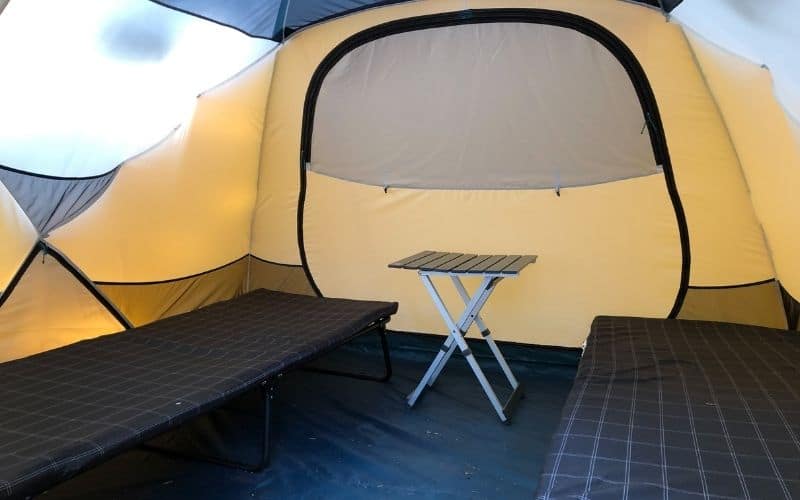
While these give you a rough idea of how many campers will fit inside, it’s best to take them with a pinch of salt. Why? Well, many brands are apt to overstate capacities either a) because they’re inveterate optimists, or b) to make their tents appear roomier than they are.
To gauge capacity more accurately, we recommend you search for the tent’s overall square footage in the product specs. The average adult sleeper needs around 14 square feet of space for a comfortable night’s sleep, so you can simply divide the total square footage by 14 and you’ll know how many sleepers can comfortably fit inside.
For example: 100 square feet divided by 14 = 7.1. This means a 100-square-foot tent can comfortably host 7 happy campers and will be extra roomy for 6.
Weather Resistance
Whether you plan on camping in summer only or throughout the year, weather resistance is a key metric to give thought to when choosing a new tent.
This metric can be neatly divided into two categories: wind resistance and waterproofing.
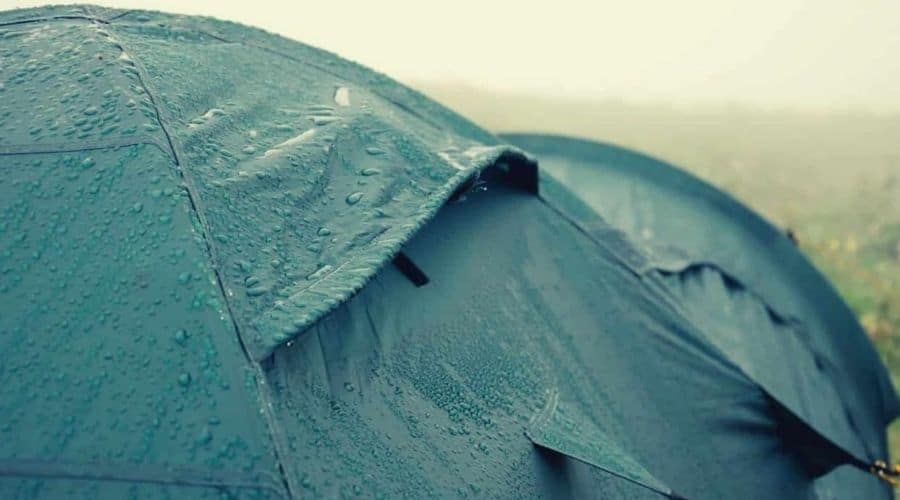
Wind Resistance
In windy conditions, the most stable camping tents are those with a lower peak height and an aerodynamic design. This means a geodesic tent or a standard dome tent, both of which sit lower to the ground and have curved walls that provide less resistance to the wind.
Conversely, the near-vertical walls of cabin and tunnel tents make them more prone to collapse, billowing, and sleep-stealing swaying and flapping when the wind’s any stronger than a moderate breeze.
Waterproofing
The waterproofing capacity of tent fabric is measured using the Hydrostatic Head (HH) open-column water test. This means it has been tested to determine how much water pressure the fabric can withstand before it starts to leak.
HH ratings are given in mm (i.e.1,000mm HH, 2,000mm HH, and so on), and the higher the figure, the more waterproof the fabric will be. For three-season camping, we recommend a tent with a minimum 1,000mm HH rainfly and 1,500mm flooring.
The most waterproof tents in our review are the Coleman Octagon (3,000mm rainfly and floor) and MSR Habitude (1,500mm rainfly, 10,000mm floor). The least waterproof is the Coleman Sundome 4. This tent’s floor and fly have a high HH rating (3,000mm), but the rainfly offers only partial coverage, so a large portion of the inner tent has no protection from precipitation.
Weight And Packed Size
Weight and packed size are important factors to consider when choosing your tent, especially if you plan on doing any backcountry camping.
Plan on using your tent for car or SUV camping only? If so, you can skip this metric and proceed to “Ease of Setup.” If your vehicle – rather than your legs – is responsible for transporting your tent to your pitching point, then you can afford to choose a roomier, sturdier, and heavier tent, irrespective of poundage and packed dimensions.
If you’re backcountry camping, however, you want a tent that strikes the optimal balance between livability, ruggedness, weatherproofing, packability, and weight.
Finding this balance can be tricky because weight savings often entail a trade-off with other desirable characteristics like liveable space, robust waterproofing, and durability.
Our list’s heaviest and lightest camping tents, the Coleman Octagon and REI Co-Op Half Dome 3+ provide perfect cases in point.
The Octagon offers a whopping 122 square feet of interior space and has a 3,000mm HH waterproof rating, but weighs a mighty 45 pounds. The Half Dome 3+, on the other hand, weighs just 5 lbs. 11.5 oz., but offers far less protection against the elements, only 48.75 square feet of livable space, and has fairly flimsy, 20-40D fabric.
The moral of the story? Before buying, establish your priorities to draw up a shortlist, then decide how much livability, durability, and weatherproofing you’re willing to sacrifice for weight savings.
If you’re looking for a crossover tent (i.e. one that’s suitable for both car camping and backcountry camping), check out the MSR Habitude. While not lightweight, this tent’s 12-pound packed weight makes it light enough for short backcountry forays, while its roomy sleeping area and high center height make it just as livable as many “luxury” car-camping tents.
Camping Gear Storage Space: Pockets, Vestibules, And Garages
Storage space is important when choosing a new tent for three reasons:
- It frees up space for humans in the sleeping area, thus improving livability
- It helps keep your shelter clean and clutter-free
- It helps you keep your gear organized and easier to locate
The main storage features to look for when you are in the camping tent market are large “garages” or vestibules, interior pockets on the tent walls, and a “gear loft”, i.e. a suspended mesh shelf in the tent canopy that lets you store gear above the sleeping area.

The North Face Wawona 6, which has a whopping 66 sq. ft. of vestibule space and a myriad of pockets on the inner tent walls and roof, is the best tent for storage of all the models in our review. The REI Base Camp, which has a total of 14 pockets and 44 sq. ft. of vestibule area, is a close second.
Durability
Durability is a direct correlate of value for money, so should always be a priority when choosing a new tent.
A tent’s durability depends primarily on the fabrics used in its construction as well as the pole material.
Poles are made with either aluminum, steel, or fiberglass. Steel is the most durable of the three but is also far heavier than the other two materials. Between aluminum and fiberglass, aluminum is the hands-down winner. Fiberglass isn’t as strong or resilient as aluminum, and is also less ductile, meaning it’s prone to shattering under stress.
The durability of a tent’s fabrics depends on the fabrics’ density. Fabric density, or thickness, is measured in something called “Denier,” which usually appears in product specifications as a solitary “D” – e.g., “50D,” “100D,” and so on. A higher denier count equals more robust and durable fabric, so the higher the better if longevity is a concern.
The denier count of the rainfly and inner tent fabric is usually much lower than the flooring. This is because tent floors are exposed to things like rocks, roots, and grit, all of which can puncture or wear through flimsy fabric.
If you do most of your camping at established, front-country sites with well-maintained pitches, this isn’t so much of a concern. For backcountry camping, however, the rougher nature of the terrain means you’ll need tougher flooring (ideally 150D+) unless you plan on carrying a separate tent footprint.
Ease Of Setup
Choosing a tent that’s easy to set up is highly recommended, especially if you’re camping with your family.
Top of the class in this metric is a pop-up or “instant” tent, i.e. those that have poles that are pre-attached to the fabric to allow for extra-quick, hassle-free pitching.
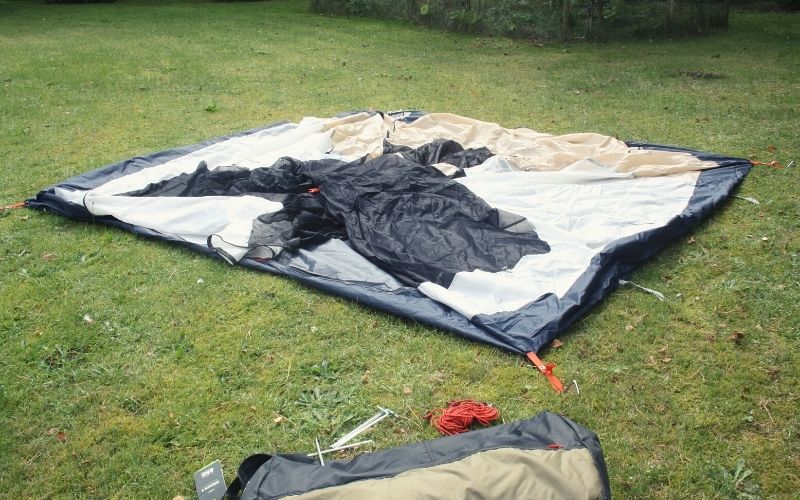
The next best thing is tents with “hubbed” pole assembly, meaning that all of the poles connect to a central pole hub, making it easier to avoid threading the poles through the wrong loops or clips. If this system only uses two poles instead of three, four, or five, all the better – though it’s worth noting that fewer poles usually equals less stability.
Beyond pre-attached poles and hubbed pole systems, the two features most conducive to struggle-free pitching are color-coded poles and freestanding designs. Color-coded poles make it easy to identify which poles go in which sleeves, while a freestanding design means the tent will stay upright even before it’s staked out with guylines.
All of the tents featured above have a freestanding design, and nearly every tent on our list has color-coded poles except for the Coleman Sundome.
Ventilation
Ventilation is an oft-overlooked but crucial factor to consider when deciding which tent to buy. Without ample vents, doors, and windows, your shelter will soon become a stuffy, damp, and uncomfortable place.
Death and taxes are often cited as life’s two most inevitable eventualities. But anyone with a bit of camping experience under their belt knows that condensation is (almost) equally unavoidable.
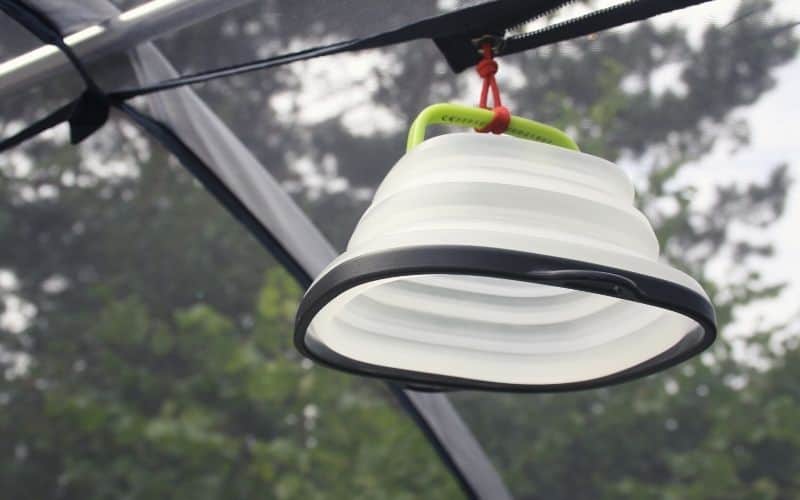
Condensation occurs when warm, humid air (like the kind inside your tent) encounters a colder surface (like the walls of your tent). At this point, the airborne water vapors caused by the breath and sweat of the tent’s occupants change from a gaseous form to liquid, and soon your tent will be somewhere between “slightly damp” and “wetter than an otter’s pocket”.
Luckily, tent manufacturers have come up with various means of mitigating the problem and ensuring their tents have enough airflow to keep our tent interiors as condensation-free as possible.
The first and most important of these is the use of a double-walled design.
Double-wall camping tents consist of an inner tent (aka “tent body”) and a weather-resistant rainfly. The inner tent’s mesh construction allows heat and moisture to escape the sleeping area, while the gap between the two layers allows fresh air to circulate and minimize the heat differential that causes condensation.
Other features that help improve air permeability and minimize condensation include double mesh doors, large mesh panels in the tent canopy, and air vents in the roof and/or walls of the tent. These features are rare in cheaper tents but all but standard in high-end models like the MSR Habitude and REI Kingdom, Skyward, and Base Camp.
Peak Height And Pole Structure
A tent’s livability is largely determined by its structure and shape and peak height, so these are other important considerations when choosing.
Peak height (aka “center height”) refers to the distance between the tent floor and the tent ceiling at the highest point. Because this determines how easy it is to move around inside the tent while standing up, it’s a crucial contributor to livability.
Cabin and tunnel tents provide the most headroom since their near-vertical walls translate into almost uniform peak height throughout the tent. The curved shape of a ‘dome-style tent’, on the other hand, means ceiling height drops sharply as soon as you move away from the center of the tent, and is much lower around the edges.
It’s worth bearing in mind that a dome tents’ lower profile and curved shape will make them better performers in windy conditions. Conversely, the steep walls on cabins and tunnels mean they tend to take a battering (and occasionally buckle or collapse) when things get blowy.
Are you looking for a specific tent?
Most buyers have a specific type of tent in mind when they begin shopping. Below, we provide a brief overview of the best tents in popular categories, recommending our favorite four-person tent, six-person tent, eight-person tent, family tent, and waterproof tent.
What is the best 4-person tent?
The best four-person tent out there is the REI Co-op Wonderland 4. This three-season tent is roomy, excellent in warm conditions, and has an array of top-notch features.
We love the Wonderland’s “scalloped fly” design, which lets you enjoy 360-degree views and heat-beating ventilation even with the fly down. Other features our testers admired are the plentiful storage options, huge doors, and triangulated center pole configuration, which makes setup a breeze and adds stability in windy conditions.
What is the best 6-person tent?
The best 6-person tent is the REI Co-op Base Camp 6. This three-season tent can stand up to lashing rain, strong winds, scorching heat, and everything in between, and also scored high on comfort, convenience, and livability in testing.
The Base Camp offers 84 square feet of floor space and has a 44-square-foot vestibule, so there’s plenty of room for six sleepers plus camping gear. A wealth of convenience-enhancing features also let you make the most of that space and make it far more comfortable than its closest competitors.
What is the best 8-person tent?
The best 8-person tent is the Eureka Copper Canyon XL. The Copper Canyon has 130 square feet of interior space, an 84-inch center height, and near-vertical walls that maximize headroom throughout the tent. This makes it the most livable tent we tested and a true “home away from home.”
Our testers agreed that the Copper Canyon wouldn’t be their first pick in extremely wet weather, but its outstanding ventilation makes it a standout for summer camping.
What is the best waterproof tent?
The best waterproof tent for three-season camping is the REI Co-op Half Dome 2+ (and REI Co-op Half Dome 3+). This tent boasts the ideal mix of sturdiness, durability, portability, comfort, and outstanding performance in wet weather.
The Half Dome has a 2,000mm PU rainfly, heavy-duty bathtub-style floor, effective ventilation, and heat-sealed seams, meaning it’s built to keep you dry in even the most biblical downpours.
The Half Dome is also lightweight, made with extra-tough materials, and ranks among the best tents we tested for features and livability.
Best Tents for Camping: The Verdict
Our testers unanimously voted the REI Co-Op Base Camp 6 the best camping tent on the market. The Base Camp ticks all the boxes for three-season family or group camping – it’s spacious, waterproof, well-ventilated, and boasts an outstanding feature set.
For something a little cheaper, we recommend the Coleman Sundome 4 and the REI Co-op Skyward 6. Both of these tents make a few compromises on waterproofing and features but are otherwise great bargain buys.
If you liked this article or have any questions, drop us a line in the box below. And if you’d like to share it with your friends, please do.


